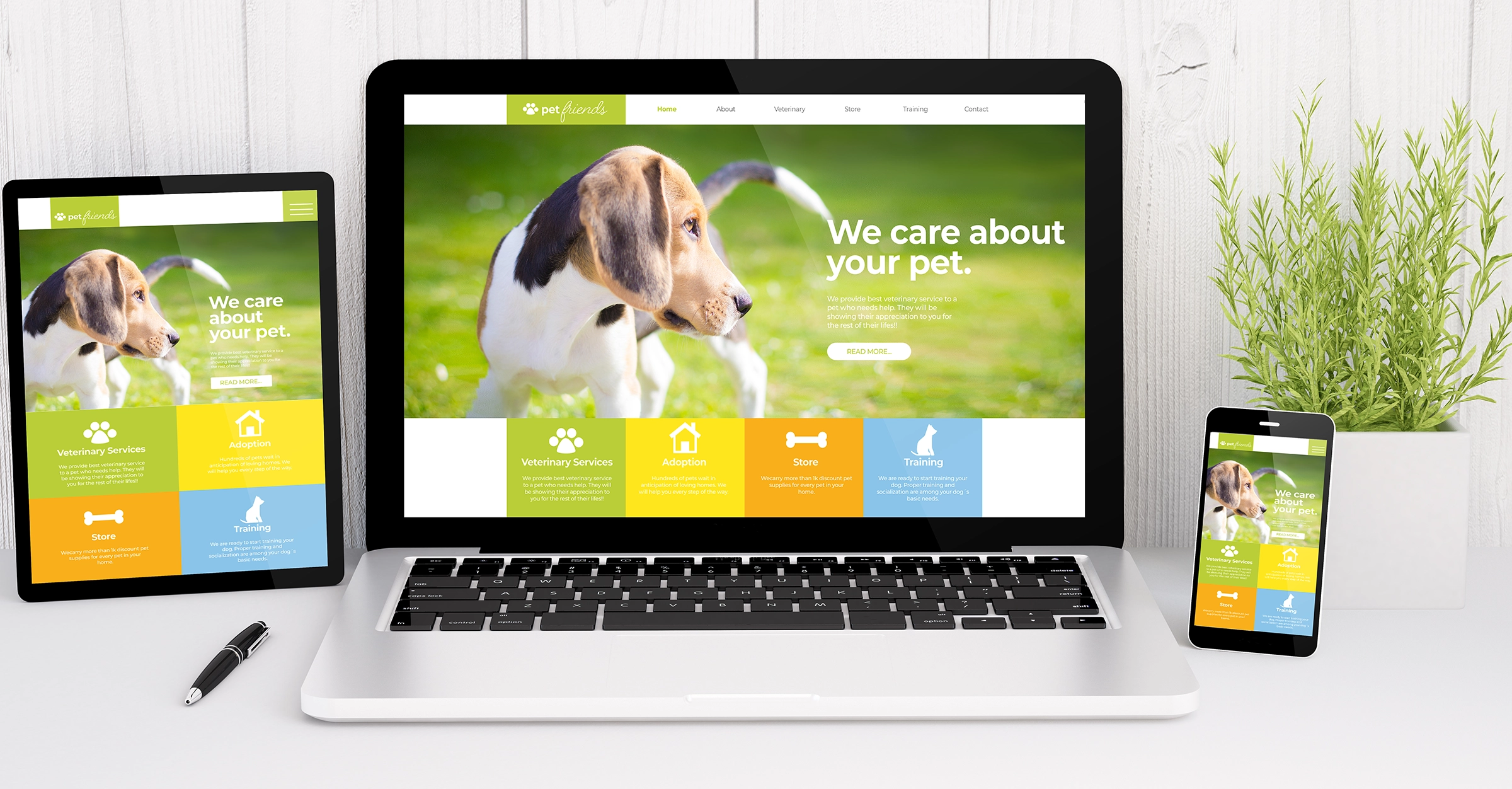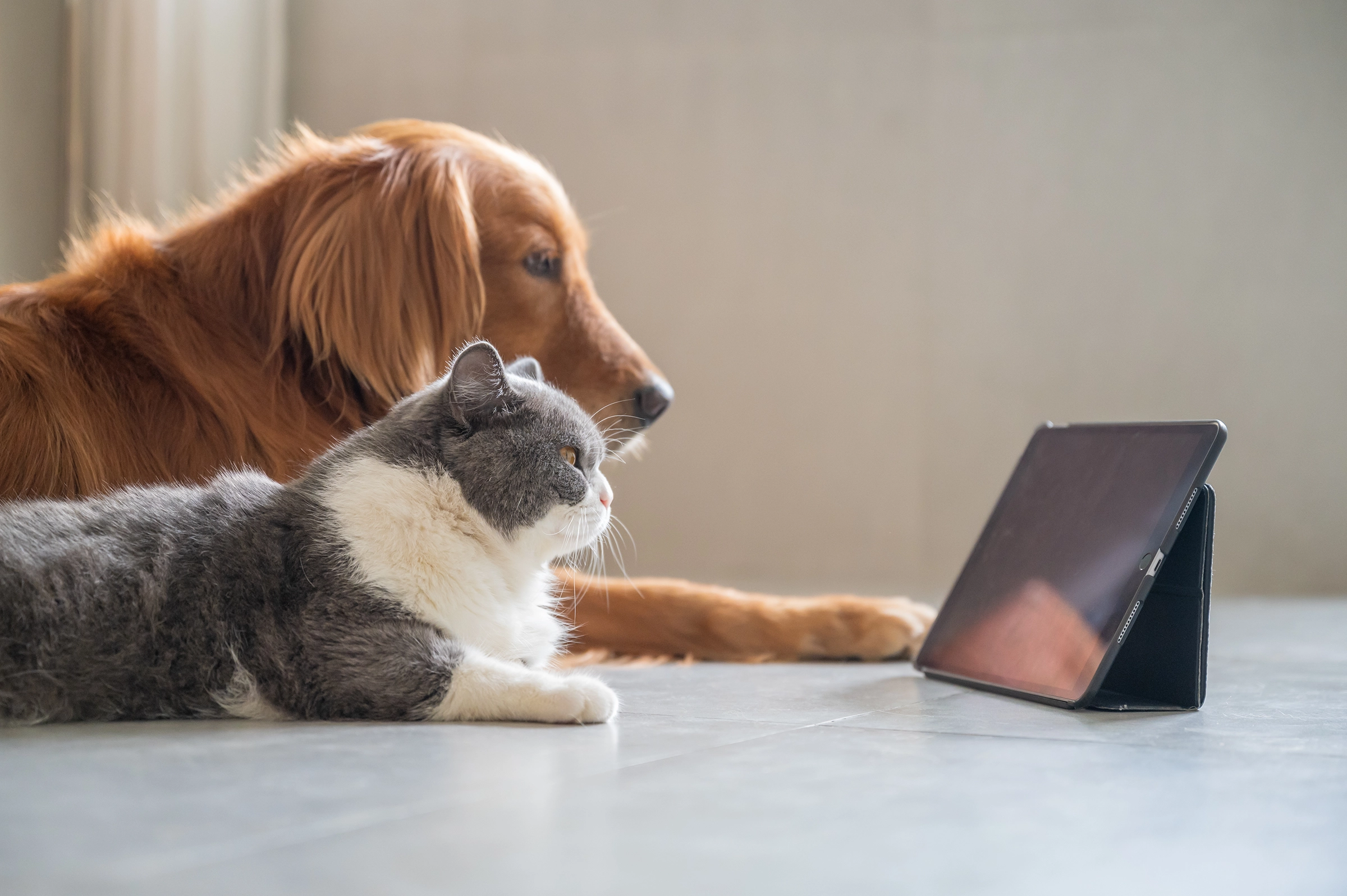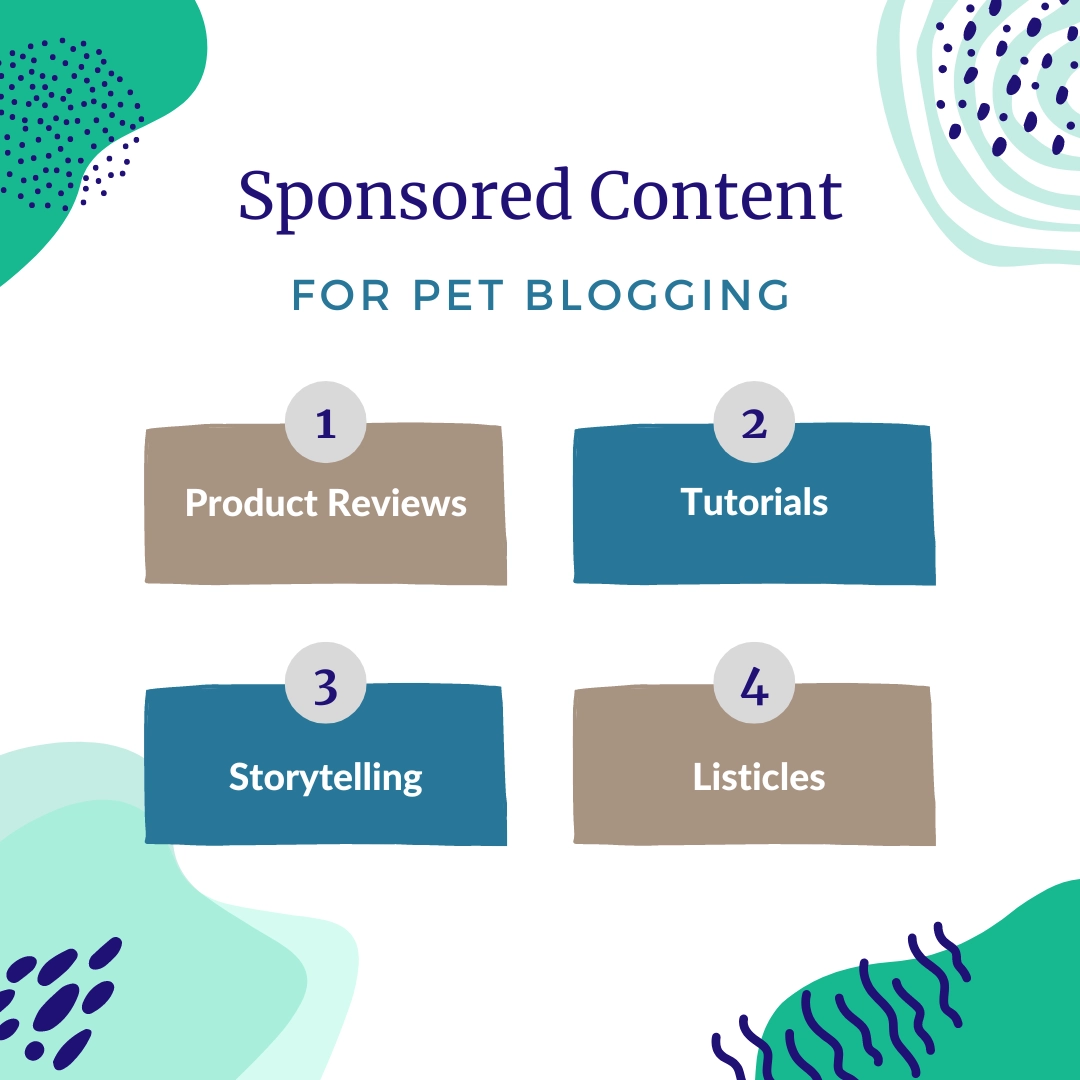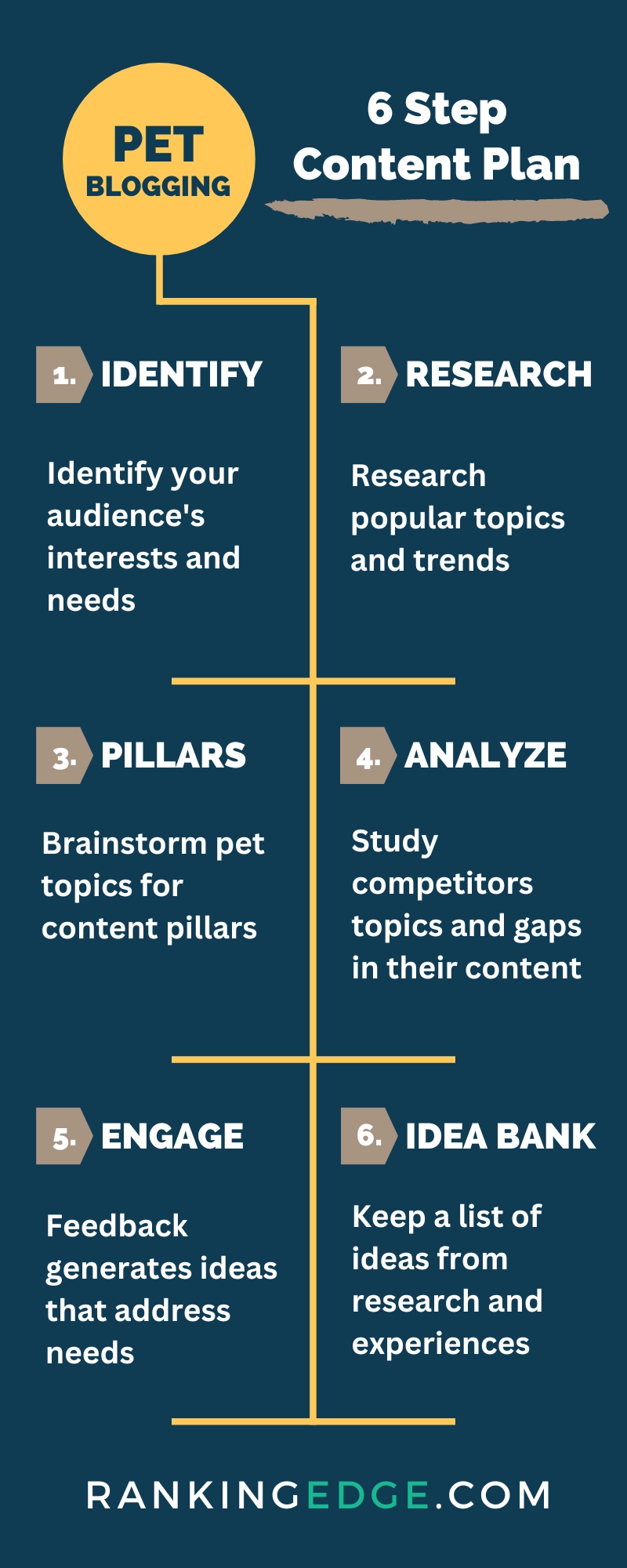Pet blogging has taken the internet by storm. Countless pet enthusiasts share their knowledge, experiences, and adorable pet moments with the world.
As a form of content creation that focuses on pets and their well-being, pet blogging offers a unique platform for animal lovers to connect, learn, and express their passion.
The importance and potential of pet blogs cannot be understated. Millions of people own pets worldwide. There is a vast audience eager to consume content related to their furry, scaly, or feathery companions.
According to the APPA National Pet Owners Survey, 86.9 million U.S. households have pets!
From expert advice on training and nutrition to heartwarming stories of rescue and rehabilitation, pet blogs cater to a wide array of interests, making them both enjoyable and informative.
Furthermore, the ever-growing pet industry provides ample opportunities for pet bloggers to not only share their expertise but also make a significant impact on the lives of pets and their owners.
So, if you’re passionate about animals and looking to make your mark in the exciting world of pet blogging, you’ve come to the right place!
Do Pet Blogs Make Money?
Pet blogs indeed have the potential to generate income, and many pet bloggers have turned their passion for animals into a profitable online business.
To make money with a pet blog, it’s essential to explore various income streams and find the ones that work best for your particular niche and audience.
Here are some of the most common ways pet bloggers make money:
Various Income Streams for Pet Blogging
Pet blogs offer several options for advertising. These ads can be targeted to specific audiences based on factors such as location, age, and interests.
Advertising on a Pet Blog
- Display ads: You can run display ads on your blog through ad networks like Google AdSense or MediaVine, which pay you based on impressions or clicks.
- Direct ads: Partner with pet-related brands to sell ad space directly on your blog, usually for a fixed fee per month.
- Sponsored ad placement: You can also charge a fee for featuring a specific brand’s ad prominently on your blog.
Sponsored Content for Pet Blogging
Sponsored content refers to a type of promotional material created by a blogger or content creator in partnership with a brand or company. In the context of pet blogging, sponsored content often involves pet-related businesses or products.
The brand pays the blogger a fee to create and share a blog post, social media post, video, or other types of content that feature or promote their product or service.
The purpose of sponsored content is to increase brand awareness, drive traffic, or generate sales while offering valuable and engaging content to the blogger’s audience.
Sponsored content can take many forms, such as:
- Product reviews: The blogger shares their experience and opinion about a product provided by the sponsoring brand. The content usually highlights the product’s features, benefits, and any potential drawbacks.
- Tutorials or how-to guides: The blogger creates a tutorial or guide using the sponsored product or service, demonstrating its functionality and use to their audience.
- Storytelling: The blogger shares a story, experience, or personal anecdote related to the sponsored product or service, connecting with the audience on an emotional level.
- Listicles or round-ups: The blogger includes the sponsored product or service in a list or round-up of relevant items or resources, often with a brief description and a link to the brand’s website.
It’s essential for bloggers to maintain transparency and trust with their audience by clearly disclosing when content is sponsored.
This can be done by including a disclaimer at the beginning or end of the blog post, using tags like “sponsored” or “ad” on social media posts, or verbally mentioning the sponsorship in a video.
Sponsored content should always be relevant to the blogger’s niche and audience and should provide value in the form of information, entertainment, or inspiration.
Affiliate Marketing for Pet Blogging
Affiliate marketing is a popular and effective method for pet bloggers to generate income by promoting pet-related products or services on their blogs. In affiliate marketing, pet bloggers partner with companies and join their affiliate programs.
As an affiliate, the blogger earns a commission for every sale made through their unique referral links or discount codes.
This revenue model incentivizes bloggers to promote and recommend products they genuinely believe in, while offering valuable information and suggestions to their audience.
Here are some key aspects of affiliate marketing for pet blogging:
- Choosing the right affiliate programs: To be successful in affiliate marketing, pet bloggers need to join relevant and reputable affiliate programs. Some popular options include Amazon Associates, Chewy, PetSmart, and Petco. Additionally, smaller pet-related businesses or niche-specific companies might also have affiliate programs worth exploring.
- Promoting affiliate products: Once a pet blogger joins an affiliate program, they can incorporate affiliate links or discount codes into their content. This can be done in various ways, such as:
- Product reviews: Write honest and comprehensive reviews of pet products, including your affiliate links, to help readers make informed decisions.
- Resource pages: Create a dedicated page on your blog with a curated list of recommended pet products, including your affiliate links.
- Tutorial or how-to posts: Develop informative guides or tutorials that demonstrate the use of specific pet products, and include your affiliate links where appropriate.
- Social media promotion: Share affiliate-linked pet products on social media platforms, such as Instagram, Facebook, or Pinterest, to reach a broader audience.
Maintaining trust and authenticity:
It’s crucial for pet bloggers to only promote and recommend products they have personally used, tested, or genuinely believe in.
Transparency is key. Always disclose your affiliate relationships to your audience. Make it clear that you may earn a commission if they make a purchase through your links.
Complying with legal requirements for pet blogging:
In many countries, including the United States, bloggers are required by law to disclose their affiliate relationships.
Ensure you follow the guidelines set by the Federal Trade Commission (FTC) or your local regulatory body. In addition, clearly state your affiliate partnerships and include appropriate disclaimers in your content.
Tracking and optimizing performance:
Monitor the performance of your affiliate marketing efforts using tracking tools provided by the affiliate program or third-party solutions like Google Analytics.
This data will help you identify which products and promotional strategies resonate with your audience and allow you to optimize your content accordingly.
By carefully choosing the right affiliate programs, creating valuable content, and maintaining trust and authenticity, pet bloggers can successfully utilize affiliate marketing to generate income while providing helpful resources and recommendations to their readers.
Real-life Examples of Successful Pet Blogging
Some pet blogs have managed to achieve financial success through a combination of the income streams mentioned above. Here are a few examples:
- The Conscious Cat: A blog focused on feline health and wellness, which generates income through advertising, sponsored content, and affiliate marketing.
- Oh My Dog Blog: A blog that covers dog care and lifestyle topics and makes money from advertising, sponsored content, and selling merchandise.
- The Pug Diary: A niche blog dedicated to pug lovers, which earns revenue through affiliate marketing, sponsored content, and selling digital products.
Challenges and Potential Pitfalls of Pet Blogging
While it’s possible to make money from a pet blog, it’s important to be aware of the challenges and potential pitfalls that may arise:
- Building an audience: Attracting and retaining a loyal readership takes time and effort. Consistently producing high-quality content and promoting your blog on social media are crucial to growing your audience.
- Balancing monetization and authenticity: Striking the right balance between sponsored content and authentic, unbiased information can be tricky. To maintain your audience’s trust, always disclose sponsored content and be selective about the brands you partner with.
- Staying current and knowledgeable: As a pet blogger, it’s essential to stay up-to-date with the latest trends and research in pet care to provide accurate and helpful information to your readers.
- Time and resource management: Running a successful pet blog requires a significant investment of time and resources. From content creation and promotion to managing your blog’s technical aspects, be prepared to wear many hats.
How to Start a Pet Blog
Starting a pet blog can be a rewarding and enjoyable endeavor for those passionate about animals. With careful planning and attention to detail, you can create a successful pet blog that engages and informs your audience.
Finding your Pet Blogging Niche
The importance of finding the right niche for pet blogging cannot be overstated, as it plays a significant role in determining the success and sustainability of your blog.
A well-defined niche helps you stand out in the crowded pet blogging market, attract a loyal and engaged audience, and establish yourself as an expert or authority in your field.
Here are some essential considerations when researching and choosing a pet niche:
Balance Specificity and Breadth
#1. Not too little, not too big: It’s crucial to find a niche that is neither too specific nor too broad. An overly specific niche may limit your content options and audience size, while an excessively broad niche can make it challenging to differentiate your blog from others.
Look for a niche that offers ample room for content creation while still maintaining a clear focus.
#2. Research different pet niches: Begin by exploring various pet niches to identify potential areas of interest. Browse through existing pet blogs, social media groups, and online forums to gain insight into the topics that are popular, underserved, or trending.
Take note of the content types, styles, and subjects that resonate with your target audience, and consider how you can offer a unique perspective or approach.
#3. Evaluate market demand and competition: Assess the demand for content within your chosen niche by analyzing search trends, social media engagement, and audience demographics.
It’s also essential to examine the competition to identify gaps in the market or opportunities for differentiation.
Use tools like Google Trends, Google Keyword Planner, or SEMRush, BuzzSumo to gather valuable data on your niche’s popularity and competition.
#4. Choose a niche that interests you: Your passion and enthusiasm for your chosen niche are crucial for the long-term success of your pet blog.
Select a niche that genuinely interests you and aligns with your knowledge, experiences, or expertise. This will help you maintain motivation, produce engaging content, and effectively connect with your audience.
By thoroughly researching different pet niches, considering market demand and competition, and selecting a niche that aligns with your interests and expertise, you can create a pet blog that stands out and resonates with your target audience.
Possible Pet Niches for Pet Blogging
- Dog training and behavior
- Cat care and nutrition
- Exotic pet ownership (e.g., reptiles, birds, or small mammals)
- Pet adoption and rescue
- Pet health and wellness
- Service and therapy animals
- Pet-friendly travel and accommodations
- Pet grooming and hygiene
- Breed-specific blogs (e.g., Golden Retrievers, Maine Coon cats, or Bearded Dragons)
- Pet photography and art
- DIY pet toys and accessories
- Pet fashion and apparel
- Aquarium and fishkeeping
- Pet loss and grief support
- Holistic and natural pet care
- Urban pet living (e.g., raising pets in apartments or city environments)
- Senior pet care and health
- Pet-related product reviews and recommendations
- Pet safety and emergency preparedness
- Pet-friendly home design and organization
Remember to consider your interests, expertise, and the potential audience when selecting a niche for your pet blog.
Choosing the Best Domain Name for Pet Blogging
#1. Keep it short and simple
Aim for a concise, memorable, and easy-to-type domain name. Avoid complex words, excessive hyphens, or numbers. By keeping your domain name simple, you make it easier for your audience to remember and type, reducing the risk of confusion.
#2. Include keywords related to your niche
Incorporate relevant keywords in your domain name to convey your blog’s focus and improve search engine rankings. For example, if your blog is about dog training, you might consider a domain name like “PawsitiveDogTraining.com.”
#3. Be creative and unique
Choose a distinctive domain name that reflects your blog’s personality or voice. Consider your target audience, content tone, and unique aspects of your blog when brainstorming domain name ideas.
A creative and unique domain name can help your blog stand out from the competition.
#4. Choose the right domain extension
Explore options like .net, .org, or niche-specific extensions such as .pet or .dog if your desired .com domain is unavailable.
Remember that some extensions may be more suitable for certain types of blogs or audiences. Although .com is the most popular and widely recognized domain extension, other options can also be effective.
#5. Check for availability and potential conflicts
Use domain registrar search tools to verify domain name availability. Then perform a quick online search to check for potential conflicts or confusion with other brands or websites.
Ensuring your domain name is available and free of potential conflicts helps protect your brand and prevents potential legal issues.
By following these tips and carefully considering your pet blog’s niche, audience, and long-term goals, you can select a domain name that effectively represents your brand and helps attract a loyal readership.
Selecting a Pet Blogging Platform
- Choose a user-friendly and customizable blogging platform, such as WordPress, Blogger, or Wix, to create and manage your blog.
- Consider factors like ease of use, customization options, and available features when selecting a platform that meets your needs and preferences.
Why We Use WordPress and Recommend it for Pet Blogging
#1. User-friendly and accessible
WordPress is renowned for its user-friendly interface and accessibility, making it an excellent choice for bloggers of all experience levels. The platform offers an intuitive dashboard, making it easy to manage your content, add new posts, and customize your blog’s appearance.
Key benefits of using WordPress for pet blogging:
- Easy to set up and manage, even for beginners
- Extensive customization options for a unique look and feel
- A large library of plugins to enhance functionality
- Excellent support and resources available online
#2. Customization and flexibility
One of the main reasons we recommend WordPress for pet blogging is its extensive customization options. With thousands of themes and plugins available, you can create a unique and professional-looking blog that caters to your niche and audience’s preferences.
Plugins can also enhance your blog’s functionality, such as adding social media sharing buttons or optimizing your content for search engines.
#3. SEO-friendly pet blogging
WordPress is known for its SEO-friendly features, making it easier for your pet blog to rank higher in search engine results. By using SEO plugins like Yoast SEO or All in One SEO, you can optimize your content and ensure that your blog reaches a wider audience.
#4. Large and active community
The WordPress community is large and active, providing a wealth of resources and support for bloggers. From forums and online tutorials to dedicated support teams, you’ll have access to a plethora of information and assistance if you ever need help with your pet blog.
#5. Scalability and adaptability
WordPress is a scalable and adaptable platform, allowing your pet blog to grow and evolve over time. As your blog gains popularity and your needs change, WordPress can accommodate additional functionality, design elements, and even e-commerce integration.
Designing a Pet Blog: Tips and Best Practices
#1. Choose a visually appealing and responsive theme
Start by selecting a theme that is visually appealing, easy to navigate, and responsive to different devices.
A responsive design ensures that your blog looks great on desktop computers, tablets, and smartphones. Provide a consistent user experience for all visitors.
Look for themes specifically designed for pet blogs or customize a general theme to suit your niche.
#2. Prioritize readability and user experience
When designing your pet blog, prioritize readability and user experience. Choose fonts and font sizes that are easy to read. Also, use sufficient white space to make your content visually appealing and easy to digest.
Ensure that your navigation menu is clear and intuitive, allowing visitors to quickly find and access the information they’re seeking.
#3. Incorporate relevant and high-quality images
Visual content plays a significant role in engaging your audience and enhancing your blog’s overall appeal. Use high-quality images of pets, pet care products, or related subjects to support your content and capture the attention of your readers.
Be sure to use images that you have the rights to use, either by taking your own photos, using royalty-free images, or obtaining permission from the image owner.
#4. Develop a consistent color scheme and branding for pet blogging
Establish a consistent color scheme and branding for your pet blog that reflects your niche and personal style.
Your color scheme should complement your content and images. Your branding should include elements such as a unique logo, custom favicon, and cohesive design elements throughout your blog.
#5. Organize content using categories and tags
Organize your blog posts using categories and tags to make it easier for visitors to find related content. Categories can be broad topics that encompass multiple blog posts, while tags can be more specific, focusing on particular aspects of a post.
This organization will improve the user experience and encourage visitors to explore more of your content.
#6. Add social sharing buttons and encourage engagement
Incorporate social sharing buttons on your blog to make it easy for readers to share your content on their preferred social media platforms.
Encourage engagement by allowing comments on your blog posts and responding to them promptly. This interaction helps build a community around your pet blog and fosters a sense of connection with your readers.
#7. Monitor and optimize your blog’s performance
Regularly monitor your blog’s performance. Use analytics tools, such as Google Analytics, to track visitor behavior, popular content, and traffic sources.
Use this data to optimize your blog design, content, and user experience, ensuring that your pet blog continues to grow and engage your audience.
Creating a Content Plan for Pet Blogging
Creating a content plan is essential for maintaining consistency and ensuring that your pet blog offers valuable, engaging, and relevant information to your readers.
Here’s a short guide to help you brainstorm ideas for your content plan:
#1. Identify your audience’s interests and needs
Consider the interests, needs, and preferences of your target audience. Think about the questions they may have, the problems they face, or the information they’re seeking related to your pet niche. Cater your content to address these concerns and provide value to your readers.
#2. Research popular topics and trends
Stay up-to-date with popular topics and trends within your pet niche. Follow industry news, social media discussions, and other pet blogs. This research will help you identify content ideas that resonate with your audience and align with current trends.
#3. Utilize content pillars
Content pillars are broad themes that encompass various topics related to your pet niche. Identify a few content pillars for your blog and brainstorm topic ideas within each pillar. This approach ensures a diverse range of content that covers multiple aspects of your niche.
#4. Analyze your pet blogging competitors
Study the content of competing pet blogs to identify popular topics, gaps in their content, or areas where you can offer a unique perspective. Use this analysis to generate content ideas that set your blog apart and address unmet needs within your niche.
#5. Engage with your audience
Ask your readers for feedback, suggestions, or questions they may have about your pet niche. Engaging with your audience can help you generate content ideas that directly address their needs and interests, fostering a sense of community and loyalty.
#6. Keep an idea bank
Maintain a running list of content ideas as they come to you, whether from research, reader feedback, or personal experiences. Regularly review and update this idea bank to ensure you always have a fresh supply of topics for your content plan.
Developing a posting schedule:
- Establish a consistent posting schedule to keep your readers engaged and coming back for more.
- Consider factors like your availability, audience preferences, and the time required to create high-quality content when determining your posting frequency.
Incorporating various content formats:
- Diversify your content by using different formats, such as blog posts, videos, infographics, and podcasts, to cater to different audience preferences and learning styles.
- Experiment with various formats to determine which ones resonate most with your audience and help you achieve your blogging goals.
How to Write a Pet Blog
Identifying Your Unique Voice and Style
Your unique voice and style are essential for setting your pet blog apart from others and building a loyal following.
To identify your voice and style, consider your personality, writing strengths, and the tone that resonates with your target audience. Your voice should be authentic, consistent, and reflective of your passion for your pet niche.
Tone of Voice
Your tone of voice plays a significant role in shaping your pet blog’s personality and connecting with your audience. It helps convey your attitude, values, and overall approach to your subject matter.
Adopting a consistent tone of voice that resonates with your target audience can help you build trust and develop a unique identity for your blog.
There are numerous tones of voice you can explore to find the one that best suits your blog and audience:
- Informative: Focuses on providing useful, factual information
- Casual: Uses a conversational, friendly, and relatable style
- Humorous: Injects wit and humor to entertain and engage readers
- Inspirational: Shares uplifting stories, advice, and encouragement
- Authoritative: Demonstrates expertise and confidence in the subject matter
- Personal: Shares intimate experiences, thoughts, and feelings
- Formal: Follows a structured, professional approach with proper grammar and vocabulary
Choosing the right tone of voice for your pet blog involves considering your niche, target audience, and personal preferences. Experiment with different tones to find the one that best captures your unique perspective and effectively communicates your passion for your pet niche.
Pet Blogging Tips for Writing Engaging Content
- Storytelling: Use storytelling techniques to make your content more engaging and relatable. Share anecdotes, real-life experiences, or case studies to illustrate your points and connect with your readers on an emotional level.
- Sharing personal experiences: Including personal experiences in your pet blog adds authenticity and helps readers relate to your content. Share stories about your pets, the challenges you’ve faced, and the lessons you’ve learned. You will create a sense of connection and trust with your audience.
- Including visuals and multimedia: Enhance your written content with visuals and multimedia elements, such as images, videos, and infographics. These elements can help break up large blocks of text, illustrate your points, and keep readers engaged.
Ensuring Accuracy and Credibility
- Researching and fact-checking: Thoroughly research and fact-check your content to ensure accuracy and credibility. This diligence not only builds trust with your readers but also helps prevent the spread of misinformation.
- Collaborating with experts: When covering complex or specialized topics, consider collaborating with experts in the field. This collaboration can lend authority to your content and provide valuable insights for your readers.
- Citing sources and giving credit: Always cite your sources and give credit where it’s due. Properly attributing information, images, and other content demonstrates your commitment to accuracy and ethical blogging practices.
By identifying your unique voice and style, writing engaging content, and ensuring accuracy and credibility, you can create compelling and trustworthy pet blog posts that captivate your audience and foster a loyal readership.
How to Become a Pet Blogger
Building an Online Presence
- Engaging with your audience: Interact with your readers by responding to comments, answering questions, and encouraging discussions on your blog and social media platforms. This engagement helps you build relationships with your audience and fosters a sense of community around your pet blog.
- Utilizing social media platforms: Expand your online presence by actively participating in relevant social media platforms. Share your blog content, engage with your followers, and connect with other pet enthusiasts to grow your audience and increase your blog’s visibility.
- Collaborating with other pet bloggers: Partner with other pet bloggers through guest posts, interviews, or joint projects. This collaboration not only helps you reach new audiences but also enables you to learn from your peers and share your expertise.
Establishing Yourself as an Authority in Pet Blogging
- Continuing education and staying current: Stay up-to-date with industry news, research, and best practices to maintain your expertise and credibility. Continually educate yourself and be prepared to adapt your content as new information becomes available.
- Attending industry events and conferences: Participate in pet industry events, conferences, and workshops to network with professionals, learn from experts, and stay informed about the latest trends and developments in your niche.
- Networking with professionals in the pet industry: Build relationships with pet industry professionals, such as veterinarians, trainers, and pet product manufacturers. This networking can lead to valuable collaborations, endorsements, and opportunities to further establish your authority in your niche.
Monetizing Your Pet Blog
- Choosing the right income streams: Experiment with various income streams, such as advertising, sponsored content, affiliate marketing, and selling products or services, to determine which methods are most effective and sustainable for your pet blog.
- Balancing sponsored content and authenticity: When incorporating sponsored content, always prioritize your readers’ best interests and maintain transparency about the nature of the sponsorship. This balance helps preserve your authenticity and trustworthiness while generating income.
- Tracking your progress and adjusting your strategy: Regularly monitor your blog’s performance, income, and growth to identify areas for improvement and adjust your monetization strategy as needed. This ongoing evaluation ensures that your pet blog remains profitable and continues to grow over time.
By building an online presence, establishing yourself as an authority, and effectively monetizing your pet blog, you can successfully transition from a casual pet blogger to a respected and financially sustainable pet blogging professional.
Final Thoughts and Conclusion on Pet Blogging
Recap of Key Points
Throughout this guide, we’ve explored the various aspects of pet blogging, including understanding the potential of pet blogs, starting your own pet blog, developing engaging content, and establishing yourself as a pet blogger.
We’ve discussed the importance of finding the right niche, setting up your blog, and creating a content plan, as well as the significance of adopting a unique voice, writing engaging content, and ensuring accuracy and credibility.
Encouragement to Aspiring Pet Bloggers
To all aspiring pet bloggers, remember that your passion and dedication are the foundations of a successful pet blog. With consistent effort, continuous learning, and a genuine love for your niche, you can create a pet blog that informs, entertains, and inspires your readers.
Don’t be afraid to experiment with different approaches, learn from your experiences, and continually refine your strategy to achieve your goals.
The Potential Impact of Successful Pet Blogging
A successful pet blog has the potential to make a significant impact, not only for you as the blogger but also for your readers and the pet community as a whole.
By sharing your knowledge, experiences, and insights, you can help educate others about responsible pet care, promote awareness of critical issues, and contribute to the overall well-being of pets and their owners.
Additionally, your pet blog can provide you with personal fulfillment, a sense of purpose, and the opportunity to turn your passion for pets into a rewarding and sustainable career.
Embrace the exciting journey of pet blogging and make your mark in the world of pet lovers, one paw print at a time.







